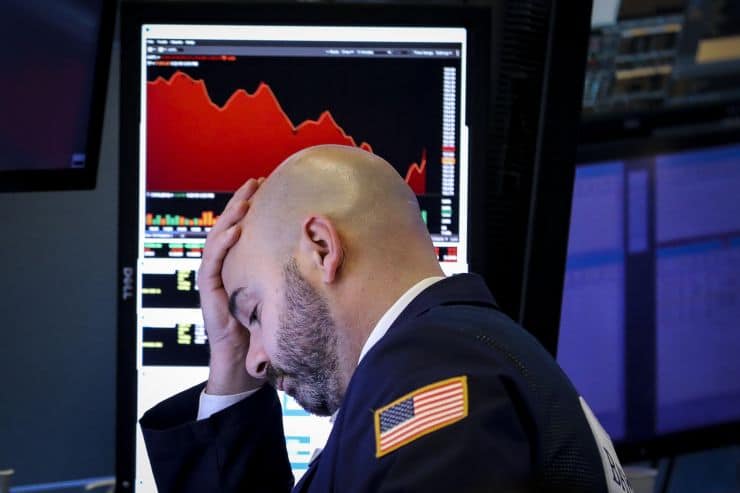
It took just four brutal trading days for a $1.4 trillion wipeout in the S&P 500 stock value. From the Federal Reserve’s disappointing comments on the future of interest rates to President Donald Trump’s surprise tariffs to China’s weaponizing of the yuan, the record-long bull market took a big hit in a relatively short time.
Here’s an explanation of why it’s happening.
The Dow Jones Industrial Average tumbled 767 points on Monday, its sixth-largest point decline ever, as investors brace for a protracted battle between the world’s two largest economies. The S&P 500 plunged more than 5% in less than a week, while the Cboe Volatility Index, AKA Wall Street’s “fear gauge,” jumped to the highest in 2019.
Dow futures fell again Monday evening, implying a 600-point drop at the open on Tuesday.
Started with the Fed
It all went down four sessions ago when the Fed cut interest rates for the first time in more than a decade. On the surface, equity investors would normally welcome a rate cut. But stocks started cratering when Fed chief Jerome Powell described the rate cut as a “midcyle adjustment,” a signal that maybe they would only cut one or two times rather than begin a lengthy cutting cycle. Traders pushed the S&P 500 down 1% that day.
Then Trump’s Tariffs
Equities tumbled anew the next day when Trump abruptly ended the ceasefire in the trade war with China. In a Thursday afternoon tweet, the president announced 10% tariffs on another $300 billion worth of Chinese goods, effective Sept. 1. The news caught traders off caught as the White House had said trade talks in Shanghai were “constructive ” less than 24 hours earlier. The S&P 500 tumbled another 0.9% and completed its worst week of the year.
China retaliates
China was quick to strike back at the tariff threat. On Monday, China allowed its currency to breach a psychological red line—the key 7 yuan to the dollar level — for the first time since 2008. Meanwhile, it halted buying of U.S. agricultural products and threaten to impose duties on the farm goods it bought since Aug.3. These retaliation measures — China’s biggest shot fired to date — rattled the markets and took nearly 3% from the S&P 500.
And more selling ahead on Tuesday
The U.S. Treasury Department late Monday after the stock market closed declared China a currency manipulator, saying it’s using yuan to gain “unfair advantage” in trade. The move hit stock market futures and set us up for yet another drop on Tuesday.
The monster bloodbath in stocks sparked a major flight-to-safety move. The 10-year Treasury yield plunged below 1.74% on Monday, its lowest level since November 2016 as investors flooded into Treasurys. In the meantime, gold hit its highest level since 2013.
With no clear path to a trade resolution in sight, it’s hard to see a relief in stocks’ brutal sell-off in the near term.
“I believe the more severe a market sell-off, the more likely the US is to act in some way to counteract the effects of tariffs,” Kristina Hooper, Invesco’s chief global market strategist, said in a note. “I hold out hope that the US will recognize that winning a trade war with China is very unlikely; that should prompt it to abandon its masochistic bent and avoid any more self-inflicted damage.”

